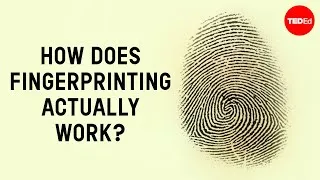The rise and fall of history’s first empire - Soraya Field Fiorio
1,481,542 views ・ 2020-10-15
请双击下面的英文字幕来播放视频。
翻译人员: Lily Xu
校对人员: Shu Fei Chow
00:07
History’s first empire rose
out of a hot, dry landscape,
0
7689
5318
历史上的第一个帝国
地处一片炎热干燥的地区,
00:13
without rainfall to nourish crops,
without trees or stones for building.
1
13007
5780
那里既没有雨水灌溉农作物,
也没有建造房屋的树木和石头。
00:18
In spite of all this, its inhabitants
built the world’s first cities,
2
18787
5353
尽管如此,这里的居民依然
建造出了世界上的第一座城市,
00:24
with monumental architecture
and large populations—
3
24140
4086
有着宏伟壮观的建筑
和庞大的人口——
00:28
and they built them
entirely out of mud.
4
28226
4316
且这些城市完全是由泥土建造的。
00:32
Sumer occupied the southern part
of modern Iraq
5
32542
3510
苏美尔(Sumer)位于
当代伊拉克的南部,
00:36
in the region called Mesopotamia.
6
36052
2700
地处美索不达米亚平原。
00:38
Mesopotamia means “between two rivers”—
7
38752
3180
美索不达米亚意为“两河流域”——
00:41
the Tigris and the Euphrates.
8
41932
2960
即底格里斯河和幼发拉底河。
00:44
Around 5000 BCE, early Sumerians used
irrigation channels, dams, and reservoirs
9
44892
7141
大约在公元前 5000 年,早期的
苏美人建造了水渠、水坝和水库,
00:52
to redirect river water and farm
large areas of previously bone-dry land.
10
52033
6427
将河水引进这些
极其干燥的大面积耕作土地。
00:58
Agricultural communities like this
were slowly springing up around the world.
11
58460
4516
像这样的农业社区
逐渐在世界各地慢慢兴起。
01:02
But Sumerians were the first
to take the next step.
12
62976
3790
但苏美尔人是最早
采取下一步行动的人。
01:06
Using clay bricks made from river mud,
13
66766
2570
他们开始利用
由河泥制成的黏土砖
01:09
they began to build multi-storied
homes and temples.
14
69336
4000
建造高层住宅和神庙。
01:13
They invented the wheel—
15
73336
1260
他们发明了陶轮——
01:14
a potter’s wheel, for turning mud
into household goods and tools.
16
74596
5013
利用泥土制作家具用品和工具。
01:19
Those clay bricks gave rise
to the world’s first cities,
17
79609
4294
约公元前 4500 年左右,
01:23
probably around 4500 BCE.
18
83903
3790
在这些黏土砖上诞生了
世界上第一座城市。
01:27
At the top of the city’s social ladder
were priests and priestesses,
19
87693
4556
处在这座城市最高社会阶层的
是男祭司与女祭司,
01:32
who were considered nobility,
20
92249
2133
他们被视为贵族。
01:34
then merchants, craftspeople,
farmers, and enslaved people.
21
94382
5674
其后是商人、工匠、农民和奴隶。
01:40
The Sumerian empire
consisted of distinct city-states
22
100056
3840
苏美尔帝国由不同的城邦组成,
01:43
that operated like small nations.
23
103896
2610
各个城邦如同
小型国家那样运作。
01:46
They were loosely linked
by language and spiritual belief
24
106506
3380
他们依靠语言和宗教信仰
而松散地联系在一起,
01:49
but lacked centralized control.
25
109886
2640
但缺乏集中管理。
01:52
The earliest cities were Uruk,
Ur, and Eridu,
26
112526
4355
乌鲁克(Uruk)、乌尔(Ur)
和埃里都( Eridu)是最早的城市,
01:56
and eventually there were a dozen cities.
27
116881
2840
随后出现了十几座城市。
01:59
Each had a king who served a role
somewhere between a priest and a ruler.
28
119721
4915
每个城邦都有一个国王,
职责介于祭司与统治者之间。
02:04
Sometimes they fought against
each other to conquer new territories.
29
124636
4397
有时, 他们为了占领新领地
而互相争斗。
02:09
Each city was dedicated to a patron deity,
considered the city’s founder.
30
129033
5703
每个城邦都供奉著一位
被视为该邦的创始者——守护神。
02:14
The largest and most important building
in the city was this patron god’s home:
31
134736
5162
城中最大且最重要的建筑
就是这位守护神的住所:
02:19
the ziggurat, a temple designed
as a stepped pyramid.
32
139898
4587
之字形塔庙(ziggurat),
外形很像阶梯式的金字塔。
02:24
Around 3200 BCE, Sumerians began
to expand their reach.
33
144485
5544
公元前 3200 年左右,
苏美尔人开始扩张自己的势力范围。
02:30
The potter’s wheel found a new home
on chariots and wagons.
34
150029
4266
陶轮发明开始
被应用在战车和马车上。
02:34
They built boats out of reeds
and date palm leaves,
35
154295
3490
他们用芦苇和椰枣叶建造了船,
02:37
with linen sails that carried
them vast distances by river and sea.
36
157785
5199
用亚麻做成了帆,
带领他们前往海上航行。
02:42
To supplement scarce resources,
they built a trade network
37
162984
3558
为了补充稀缺的资源,
他们与埃及、安纳托利亚、埃塞俄比亚
这些新兴的王国建立了商业贸易网络,
02:46
with the rising kingdoms in Egypt,
Anatolia, and Ethiopia,
38
166542
4638
02:51
importing gold, silver,
lapis lazuli, and cedar wood.
39
171180
6605
引进了黄金、白银、青金石和雪松木。
02:57
Trade was the unlikely impetus
40
177785
2450
商业贸易看起来
是个影响力不大的动力,
03:00
for the invention
of the world’s first writing system.
41
180235
3750
但它却推动了世界上第一个
书写系统的发明。
03:03
It started as a system of accounting
for Sumerian merchants
42
183985
3200
书写系统最初
是用来记录苏美商人
03:07
conducting business with traders abroad.
43
187185
2700
与国外贸易商
展开业务往来的会计系统。
03:09
After a few hundred years,
the early pictogram system
44
189885
3850
几百年后,
早期的象形文字系统,
03:13
called cuneiform turned into a script.
45
193735
3350
也称楔形文字,
发展成抽象文字。
03:17
The Sumerians drafted up the first
written laws
46
197085
2940
苏美尔人随后起草了
第一部成文律法,
03:20
and created the first school system,
designed to teach the craft of writing—
47
200025
4789
创建了第一个学校系统
用来传授书写能力——
03:24
and pioneered some less exciting
innovations, like bureaucracy and taxes.
48
204814
6503
并开创了一些不太受欢迎的新制度,
比如官僚机构和税收。
03:31
In the schools, scribes studying
from dawn to dusk,
49
211317
3520
在学校,文人学士
从童年直到成年,
日复一日,年复一年,
从黎明到黄昏都在学习。
03:34
from childhood well into adulthood.
50
214837
2790
03:37
They learned accounting, mathematics,
and copied works of literature—
51
217627
4377
他们学习会计、数学、
抄写文学作品——
03:42
hymns, myths, proverbs, animal fables,
magic spells,
52
222004
5411
赞美诗、神话、谚语、
动物寓言、魔咒,
03:47
and the first epics on clay tablets.
53
227415
3430
以及第一部
写在泥板上的史诗。
03:50
Some of those tablets told
the story of Gilgamesh,
54
230845
3300
其中的泥板记录了
吉尔伽美什(Gilgamesh)的故事。
03:54
a king of the city of Uruk who was
also the subject of mythical tales.
55
234145
5625
他是乌鲁克的国王,
也是神话故事的主角。
03:59
But by the third millennium BCE, Sumer
was no longer the only empire around,
56
239770
6117
但是到了公元前 3000 年,
苏美尔不再是世上, 甚至不再是
美索不达米亚的唯一帝国。
04:05
or even in Mesopotamia.
57
245887
2230
04:08
Waves of nomadic tribes poured
into the region from the north and east.
58
248117
5544
一群又一群的游牧部落
从北部和东部涌入了苏美尔。
04:13
Some newcomers looked up to the Sumerians,
adopting their way of life
59
253661
4000
这些初来乍到的人们因仰慕苏美尔人,
而接受了他们的生活方式,
04:17
and using the cuneiform script
to express their own languages.
60
257661
4000
并采用楔形文字来
表达他们自己的语言。
04:21
In 2300 BCE, the Akkadian king Sargon
conquered the Sumerian city-states.
61
261661
7365
公元前 2300 年,阿卡德国王
萨尔贡(Sargon)征服了苏美城邦。
04:29
But Sargon respected Sumerian culture,
62
269026
2670
但是萨尔贡尊重苏美尔人的文化,
04:31
and Akkadians and Sumerians
existed side-by-side for centuries.
63
271696
5566
因而让阿卡德人
和苏美尔人的文化并存了数世纪。
04:37
Other invading groups focused
only on looting and destruction.
64
277262
4120
其他的侵略者
则仅仅是为了劫掠和破坏。
04:41
Even as Sumerian culture spread,
65
281382
2460
即便苏美尔文化
得到了广泛的流传,
04:43
a steady onslaught of invasions killed
off the Sumerian people by 1750 BCE.
66
283842
7896
侵略者持续不断的杀戮依然
使苏美尔人在公元前 1750 年惨遭屠戮。
04:51
Afterward, Sumer disappeared
back into the desert dirt,
67
291738
4206
此后,苏美尔便消失在
茫茫的历史尘埃之中,
04:55
not to be rediscovered
until the 19th century.
68
295944
4093
直到 19 世纪才被重新发现。
05:00
But Sumerian culture lived
on for thousands of years—
69
300037
4000
但是苏美尔人的文化
却持续延续了数千年——
05:04
first through the Akkadians,
then the Assyrians, then the Babylonians.
70
304037
5118
先后被阿卡德人、亚述人
和巴比伦人传承。
05:09
The Babylonians passed Sumerian
inventions and traditions through
71
309155
3890
巴比伦人将苏美尔人的
发现和传统传入了
05:13
along Hebrew, Greek, and Roman cultures.
72
313045
3753
希伯来、希腊和罗马文化,
05:16
Some persist today.
73
316798
2410
有些依然留存至今。
New videos
Original video on YouTube.com
关于本网站
这个网站将向你介绍对学习英语有用的YouTube视频。你将看到来自世界各地的一流教师教授的英语课程。双击每个视频页面上显示的英文字幕,即可从那里播放视频。字幕会随着视频的播放而同步滚动。如果你有任何意见或要求,请使用此联系表与我们联系。







